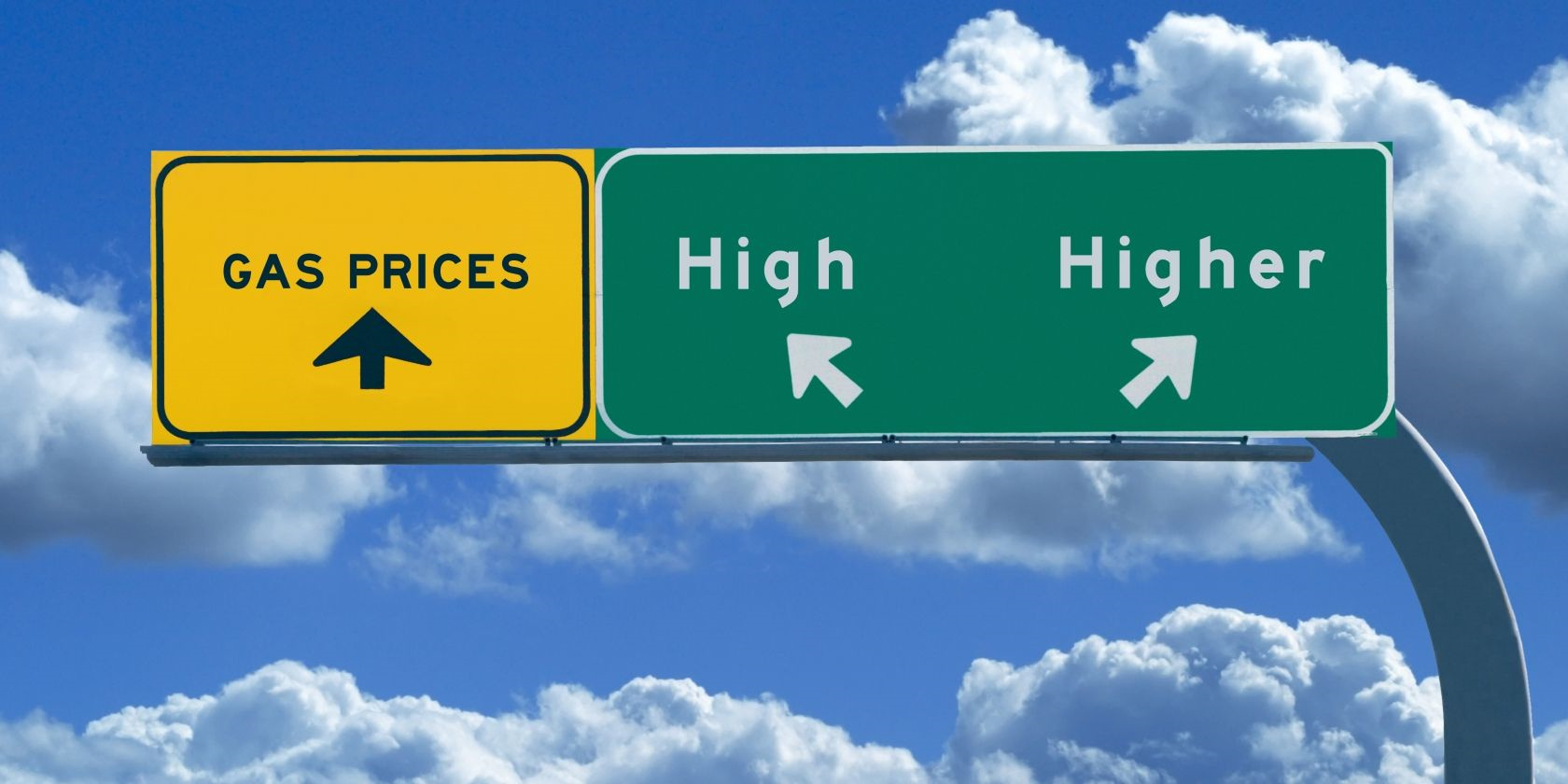Embarking on a road trip or simply navigating through your daily commutes can sometimes leave you in a pinch for fuel. Figuring out where and when you’ll find the next gas station needn’t add stress to your travel. Fortunately, in our ever-connected world, tools and tips have evolved to make locating a gas station en route both easy and convenient. So whether you’re planning ahead or need to make a quick decision, these methods will guide you effortlessly to your next fuel stop.

In the age of smartphones, navigation apps have become indispensable travel companions. They offer far more than just directions; they can also help you find gas stations along your route with a few simple taps.
Detailed Steps:
- Open your preferred navigation app on your smartphone, such as Google Maps or Waze.
- Input your destination and start the navigation process.
- Look for an option along the lines of ‘Search along route’; this could appear as a magnifying glass or a search bar.
- Type ‘gas stations’ into the search bar.
- The app will display gas stations along your journey. You can select one, and it will be added to your route.
Summary:
This method stands out for its simplicity and convenience. You’re likely already using your phone for directions, so taking advantage of its built-in features makes sense. However, relying on apps does require a data connection, which might not be available in remote areas.
Newer vehicles often come equipped with built-in navigation systems that can assist you in finding gas stations without using your phone.
Detailed Steps:
- Access the navigation system from your car’s dashboard.
- Enter your destination if you haven’t done so already.
- Look for an option titled ‘Points of Interest’ or ‘POI.’
- Search for ‘fuel’ or ‘gas stations’ within the POI category.
- The system will suggest gas stations on or near your route.
Summary:
Car navigation systems offer the benefit of a larger screen and integration with your vehicle’s features. They generally don’t rely on a mobile data connection. However, their interfaces might be less updated or user-friendly compared to smartphone apps.
Online Maps on a Computer
Planning your pit stops before you leave home can save you from potential headaches on the road. Online mapping services provide a bird’s-eye view of your route and all the services along the way.
Detailed Steps:
- On your computer, navigate to an online map service like Google Maps.
- Enter your starting point and destination to plot your route.
- Zoom in on the map and scan the path for gas station symbols.
- Take note of their location, or use the search feature by typing ‘gas stations’ and refining the results to show only those on your route.
- Jot down the ones you plan to use or print out the map as a backup for your trip.
Summary:
The main advantage here is the ability to get a big picture of your trip and strategically select where you’ll stop for gas. The downside is this method requires pre-planning and might not reflect real-time data on gas station availability.
Gas Station Locator Websites
There are specific websites dedicated to helping you find gas stations and their fuel prices, which is beneficial if you are cost-conscious.
Detailed Steps:
- Visit a gas station locator website such as GasBuddy.com.
- Input your route information or certain checkpoints along the way.
- The website will list gas stations along with current prices.
- Plan your stops based on location and price preferences.
Summary:
The primary benefit of this method is its cost-saving potential. However, prices can change frequently, and the information might not always be up-to-date. Also, availability for these services can vary by region.
Asking Locals
Sometimes technology can fail, or an off-the-grid journey might leave you without a signal. When all else fails, asking the locals can be a reliable solution.
Detailed Steps:
- At your starting point or along the way, find a local business or resident.
- Politely ask for directions to the nearest gas station or where they usually fuel up.
- Follow their pointers to find your gas stop.
Summary:
The benefit of this method is the personal touch and often more detailed guidance. The downside, though, is that you’re placing trust in anecdotal advice, which can sometimes lead to confusion.
Rest Area and Tourist Information Centers
Rest areas and tourist information centers are treasure troves of travel information, including where to find nearby gas stations.
Detailed Steps:
- Pull into a rest area or tourist information center.
- Look for maps or brochures that indicate gas stations.
- If available, speak to a representative for personalized advice.
Summary:
These centers provide trustworthy, often state-sanctioned information. Nonetheless, they may have limited hours of operation and might not provide real-time data.
Road Signs
Highways often have signs indicating upcoming services, including gas stations.
Detailed Steps:
- As you drive, keep an eye out for blue service signs that indicate upcoming exits with gas stations.
- Follow the signs to your chosen gas station.
Summary:
Road signs are reliable and straightforward, but they limit you to gas stations close to the highway and may not reflect closed or out-of-business operations.
Fuel Brand Apps
If you have a preferred gas station brand, download their official app.
Detailed Steps:
- Download the app from your smartphone’s app store.
- Enable location services to find nearby stations or search along your route.
- Use features within the app to find the best pit stop.
Summary:
Brand apps might offer loyalty benefits and accurate, branded location data. However, they won’t show competitors, which could be closer or cheaper.
Credit Card Rewards Portals
Many credit card companies offer a rewards portal that includes tools to locate gas stations where you can earn points.
Detailed Steps:
- Access the rewards portal through the credit card’s website or app.
- Use the available tools to find participating gas stations along your route.
- Choose a station that optimizes your rewards.
Summary:
This method is great for earning points, but it might limit you to certain stations and require additional steps.
Social Media Groups and Forums
Online communities can offer real-time advice and updates on gas stations.
Detailed Steps:
- Join local travel or commuting groups on social media platforms.
- Post a question or search the group’s history for gas station recommendations.
- Assess the advice and choose a station based on community feedback.
Summary:
The social aspect provides current insights and a chance to ask follow-up questions. Nonetheless, the validity of the information can be hit or miss.
After carefully navigating through these methods, you should feel confident in finding gas stations during your travels. Each approach caters to different needs, from on-the-go tech solutions to old-school human interaction. Regardless of your preference, there’s a method that will point you to the nearest pump and keep your journey smooth.
Conclusion
Getting to your next gas-up should no longer feel like an uncertain quest. With the ten methods we’ve navigated together, you’re now equipped to locate gas stations with ease and confidence. Remember, it’s always wise to factor in your route, preferences, and resources when choosing the right method for you. Safe travels and happy fueling!
Frequently Asked Questions
Do navigation apps always provide the most current information on gas stations?
While navigation apps are generally reliable, their data can sometimes be outdated. It’s always a good idea to check recent reviews or call ahead to confirm that a gas station is still in business and operational.
Can I rely on car navigation systems in remote areas with no cell service?
Car navigation systems use GPS, which does not rely on cell service, making them a dependable option in remote areas. However, ensure your maps are updated for the most accurate information.
Should I trust the gas prices listed on gas station locator websites?
Prices listed on these sites can be helpful indicators, but they are not always real-time and can change frequently. For the most accurate prices, contact the gas station directly or check for recent updates on the site.









